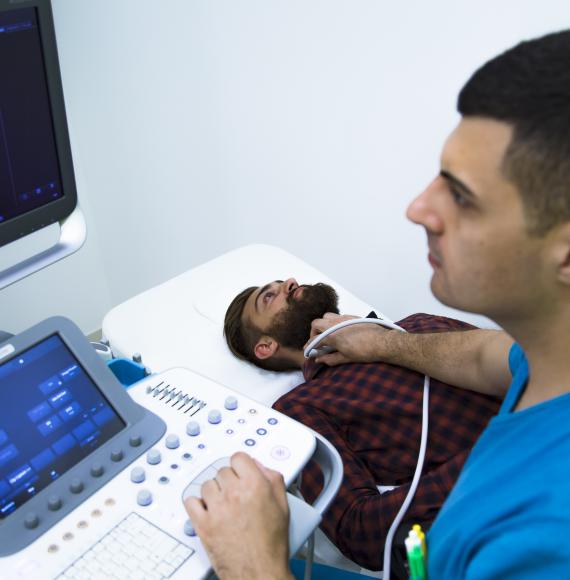Over the years, the healthcare industry has been facing an increasing number of challenges.
There is an urgent need to stabilise the healthcare sector, especially considering the rising number of patients and the staff shortage plague.
Added to this is the steady rise in healthcare costs year on year.
Getting a better grip on the overall cost of patient care delivery can improve the endgame of the healthcare sector.
While the rising cost of equipment and treatments can be difficult to control internally, healthcare organisations can counteract this by more efficiently managing administrative costs.
And by reducing the time spent on and costs of admin, this can in turn increase the quality-of-care delivery.
In this article, we take a look at the different steps you can take to reduce your healthcare organisation’s administrative costs and reliance on agency staffing.
1. Re-evaluate and renegotiate
First off, you need to know what the major expenses of your healthcare organisation are.
This data should be easily available from your accounting and auditing department.
Compare your expenses to the previous years and highlight items that are steadily increasing in cost.
From your list of highlighted items, filter out all services and goods that you order from external providers.
This is your starting point, your agreement with the main providers/vendors on your list can be renegotiated.
In many cases, healthcare organisations have laid out agreements that are decades old.
While these terms may have been advantageous previously, there is a big chance that most of them are not current anymore.
Keep in mind that renegotiating terms of services does not necessarily mean a lower price.
Key takeaway: Focus on reworking your arrangements cost-efficiently.
For example, returning damaged equipment often requires unnecessary bureaucracy and hence leads to more admin costs.
2. Reinvent and automate processes
It is essential you take a fresh look at the different processes behind running your healthcare organisation.
There is a good chance that a number of procedures are now obsolete.
For example, when taking on a new patient, do they still have to manually fill in paper-based forms?
Simply swapping to digital forms or a dedicated patient management system can greatly reduce your spending on administrative stationery and supplies, improve the accuracy of the data, free up staff's time to focus on providing reassurance and care to the patients, as well as reducing costs.
Working with your team, identify which processes are taking the most time, cause most irritation or are simply redundant.
Prioritise these and find alternative ways of getting the job done.
Change will be resisted if people feel it is being ‘done to them’, so consult your team and involve them in the process and you can help change their work lives for the better and also drive efficiencies.
Key takeaway: Revamp processes that are draining your resources.
Involve your team so they feel ownership and spend time on implementation to ensure successful adoption.
3. Embrace the cloud
Every single year, there are new technological advancements and breakthroughs.
There are so many options, so much complexity, it can be overwhelming to try and work out what to do, especially if your superpower is healthcare, not technology.
In addition, industry regulations, such as data security and privacy can seem like insurmountable obstacles.
The good news is that cloud technology makes it easier to implement technology and plug different systems together without having to commit to complex, multi-year project which never seems to end.
A digital readiness evaluation is a good place to start and then identifying the ‘quick wins’, where you can easily save time and improve your employee experience.
For example, you can potentially reduce your administrative spending on traditional pen and paper timesheets by adopting innovative staff rota software.
Additionally, this type of technology simplifies employee admin by helping you create rotas and track wage costs.
Moreover, adopting trusted tech solutions helps your administrative staff save more time and may even reduce human error.
Key takeaway: Test and adopt tech that helps you save on key resources, such as time and money.
Train your staff to use your adopted technology to its full potential.
4. Measure performance and outcomes
Before embarking on any change, set your goals.
Know what success looks like for your organisation.
After implementing any change to your processes, it’s best to determine whether this was the right move by measuring and comparing performance.
This includes the financial performance of your healthcare organisation and of your staff.
Keep in mind that not all solutions may be viable for your healthcare organisation.
You should be able to quantify the outcome of most of your procedures.
For instance, after amending obsolete procedures, set up a medium for a long-term review process.
Remember that any changes will require an adaptation time from your employees.
Proactively reviewing your revamped processes enables you to quickly fix (or get rid of) what’s not working.
Key takeaway: There are hundreds of different approaches to simplifying employee admin and reducing your expenses.
Do not be afraid to test different solutions and remember that you may not hit a home run on the first attempt.
5. Benchmark all your data
Benchmarking is essential to measure the performance of your healthcare organisation.
It helps in improving the quality-of-care, minimising risk and assisting in making informed decisions.
Additionally, benchmarking your data helps to provide clarity on how you compare to other providers in the healthcare industry.
Gathering and analysing data should be part of your organisation’s processes.
This allows you to see your organisation’s strengths and weaknesses, as well as those of other healthcare providers.
It also helps you identify opportunities for improvement and areas that need consolidating.
Key takeaway: It is useless to revamp your processes if you cannot measure the outcome.
Periodically gather and compare data to gauge the effectiveness of the changes implemented.
Off you go
There is an ever-increasing need for quality patient care and in parallel, the cost of healthcare expenditure is steadily going up.
Reducing healthcare administrative costs and simplifying employee admin burden can have a strong impact on your endgame.
Using your healthcare organisations’ resources efficiently is a top contributor to your business’ long-term sustainability.



















